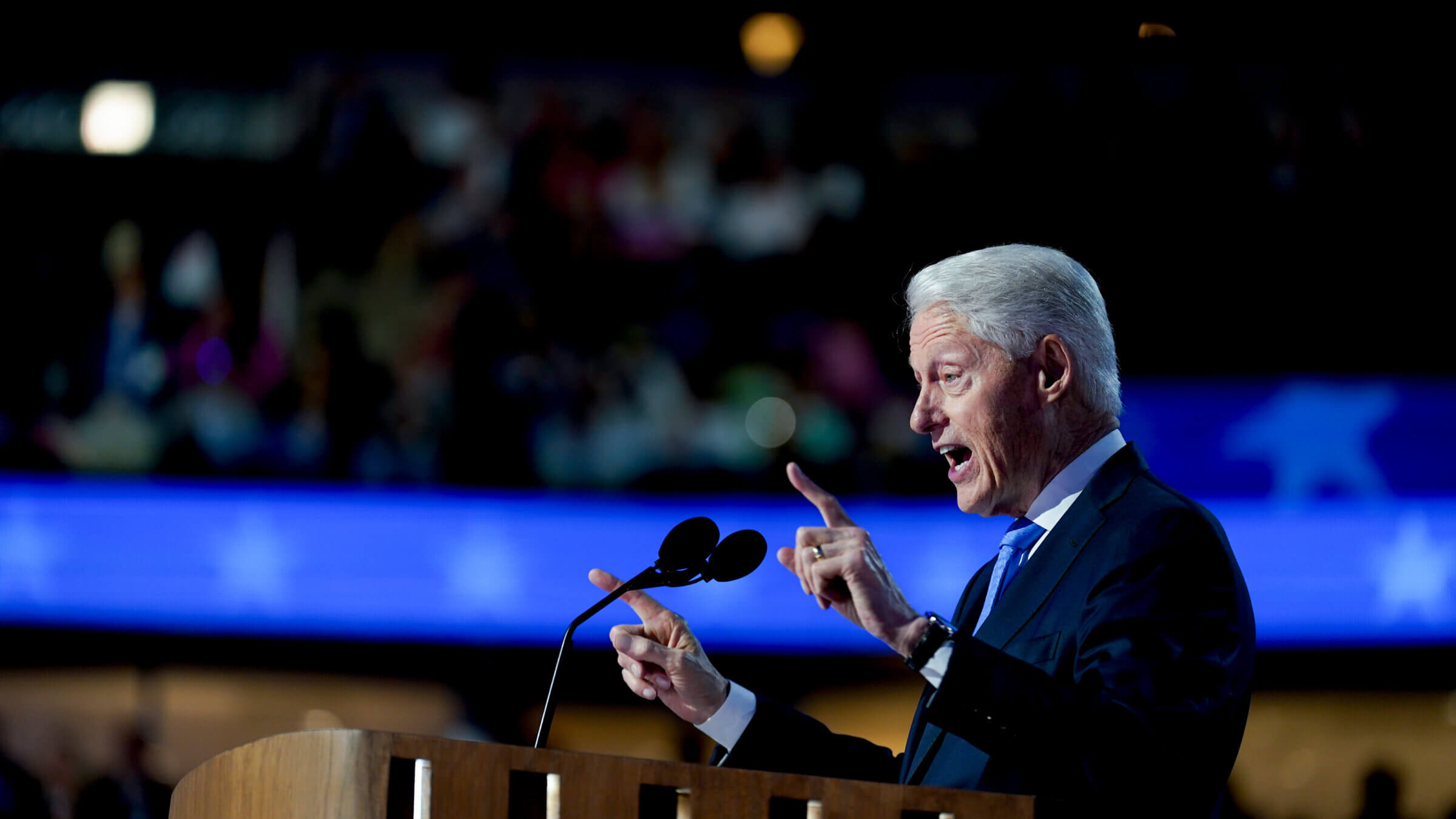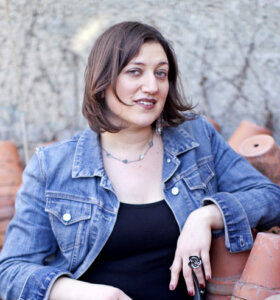What Jews and Bill Clinton talk about when they talk about ‘class’
At the DNC, there’s been a lot of talk about having ‘class’ and being part of the ‘middle class’ — let’s not forget to talk about the poor

Bill Clinton speaking at the DNC. Photo by Getty Images
“I want to thank Biden for his courage, class, service, and sacrifice,” former President Bill Clinton said in one of the most moving moments in last night’s Democratic National Convention speeches. It’s rare to hear a politician described as classy, and it was a linguistic departure from the other speakers.
At the DNC, “class” usually refers to economic level.
As if on cue, a few minutes later, poet Amanda Gorman spoke of Americans “regardless of religion, class, or color.” Vice Presidential nominee Tim Walz, who spent years in the classroom, constantly mentioned the “middle class” in his speech, as if it were a mantra.
“If you are a middle-class family, or a family trying to get into the middle class, Kamala Harris is going to cut your taxes,” Walz said. That’s two mentions of “class” in one sentence.
All these versions of “class” make their way into the Merriam-Webster dictionary definitions, but in the Jewish community, assumptions about class can be misleading. And in a year when many Jews are concerned about this presidential election, it’s worth remembering that Jews are not a monolith economically, and that there is class diversity within the Jewish community; there is also poverty.
According to the UJA Federation of New York, 23% of adults in NY Jewish households lived in or near poverty, and 11% of Jewish adults with children experience food insecurity.
In Chicago, where the convention is being held, “one-in-five households are struggling to make ends meet, reporting that they are ‘not making ends meet’ or ‘just managing to make ends meet,’” according to a Brandeis University study of the local Jewish community. “Of Jewish households that are struggling, 59% reported their financial situation had gotten worse since the pandemic.”
It’s not a typical subject at Jewish gatherings, where class is rarely discussed, and where “middle class” status may be assumed to be a minimum. But the dictionary offers a good starting point to consider why “class” can be so hard to talk about, and so often uncomfortable.
Merriam-Webster’s first definition of “class” would be familiar to Walz, a teacher: “a body of students meeting regularly to study the same subject”; the second definition is “a group sharing the same economic or social status”; another definition is “high quality” or “elegance,” which is what Clinton meant — though the former president may have been thinking of Webster’s fifth definition, which is “the best of its kind.”
In addition to speeches, the convention featured video presentations spotlighting everyday people, like an iron worker disappointed in Trump’s failed promises on infrastructure. While the video presentations were seemingly intended to appeal to white working-class voters and may not have seemed to have anything to do with Jews, the constant class angle may have felt a little uncomfortable in this year of great discomfort — because class and Jews is yet another dangerous stereotype that veers close to old tropes about Jewish and money.
It’s also related to perceptions on Jews and race.
“Jewish identity itself can be understood to be classed: that is, Jewish identity comes to be associated with being upper-middle class,” Annie Jollymoore of Rosov Consulting, which works with funders and grantees to inform and improve Jewish education and engagement, wrote in eJewish Philanthropy, expanding on an article she had written for the Forward.
“Ultimately, this can result, as with understandings of Jewish identity as white, with an inability to “see” Jews who do not fit our expectations of what Jews look like — or speak like, or eat like, or walk like, or dress like, or think like. Or where they work, how they worship, or what their relationship to Jewish texts or history are, or what their relationship to Hebrew or to Israel is.”
“All of these traits and characteristics are also impacted by class,” Jollymoore continued, “so Jewish communities must understand how Jewish life in the U.S., particularly formally organized Jewish life, has been shaped by class and whom that excludes.”
Jollymoore also described her work in a research study, which helped reveal the stereotypes and assumptions people make about Jews and class; she described an event for interfaith couples, where a man met a couple in which one member was a lawyer while the other was a police officer. “Without thinking much of it, the man made a quick assumption that the lawyer was the Jewish person in the couple and was surprised to find out it was in fact the police officer who was Jewish.
“The quickness of the assumption and the surprise at being wrong reveal that Jewish identity has a class element, and those outside of that class identity have a more difficult time being recognized by others as Jews,” she noted.
That concept of recognition really stuck with me. The Democratic convention is about Democrats defining and recognizing themselves as Democrats — while welcoming Republicans and independent voters to the tent.
The Jewish community may want to take this opportunity to consider that Jews are more diverse economically, and professionally, than many may think, and to recognize that Jews may not work in the expected professions or have the financial status that they are assumed to have.
As I listened to speaker after speaker, I thought of how all the speeches about “middle class” excluded the poor. And all those speeches are not relevant to the approximately one-fourth of American Jews who struggle to meet basic needs, as surveys show.
And of course, the middle class is a wide continent, and there are plenty of Jews who are not upper-middle-class either.
Understanding that — and treating it with respect — is the kind of “class” Clinton alluded to, as he praised the president.
Biden, who chose not to run again, may be remembered above all for his acknowledgment of a difficult reality. Jews taking a close look at America and the place of Jews in it can take this opportunity to look around honestly — and do the same.
A message from our Publisher & CEO Rachel Fishman Feddersen

I hope you appreciated this article. Before you go, I’d like to ask you to please support the Forward’s award-winning, nonprofit journalism so that we can be prepared for whatever news 2025 brings.
At a time when other newsrooms are closing or cutting back, the Forward has removed its paywall and invested additional resources to report on the ground from Israel and around the U.S. on the impact of the war, rising antisemitism and polarized discourse.
Readers like you make it all possible. Support our work by becoming a Forward Member and connect with our journalism and your community.
— Rachel Fishman Feddersen, Publisher and CEO






























